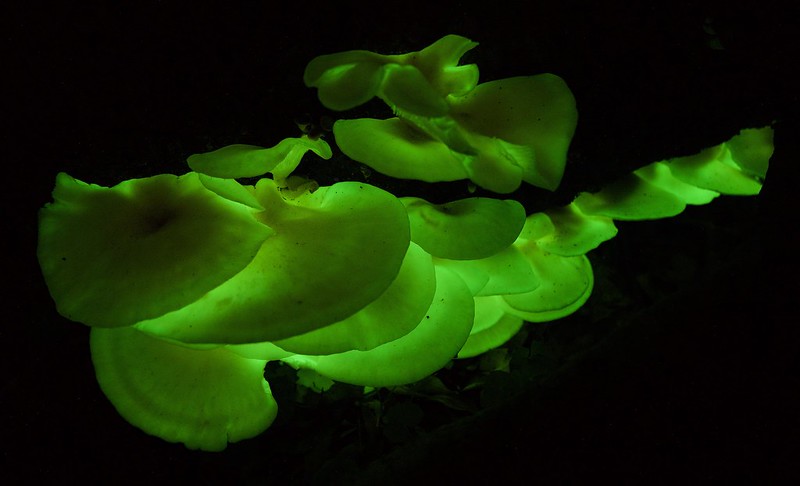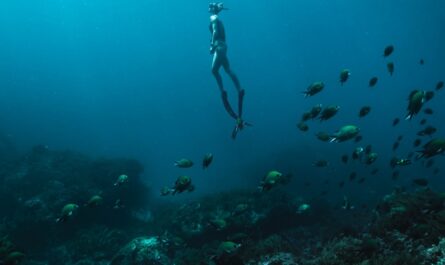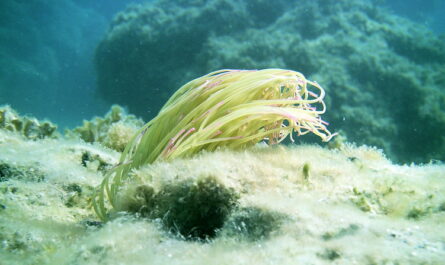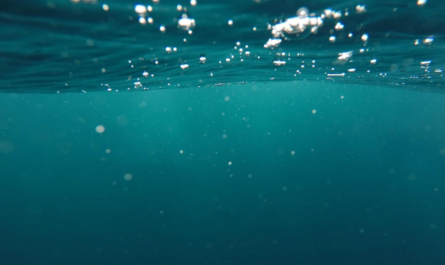The deep Atlantic Ocean, a vast and mysterious realm shrouded in perpetual darkness, is home to one of nature’s most captivating phenomena: bioluminescence. This biological ability to produce light in the depths of the ocean creates an otherworldly glow, illuminating creatures and their interactions in an environment devoid of sunlight. In this enigmatic habitat, bioluminescence is not just a spectacle but a critical survival tool, influencing predation, defense, communication, and reproduction.
This article delves into the intricate world of bioluminescence in the deep Atlantic, exploring its biological mechanisms, the astonishing creatures that utilize it, its evolutionary significance, its ecological importance, and the groundbreaking scientific research that seeks to uncover its secrets.
Understanding Bioluminescence: The Science of Nature’s Glow
1. What is Bioluminescence?
Bioluminescence is the ability of living organisms to produce and emit light through chemical reactions within their bodies. This light is typically a cold light, meaning it generates very little heat. The process involves:
- Luciferin: The light-producing molecule.
- Luciferase: The enzyme that catalyzes the reaction.
- Oxygen: Required for the reaction to produce light.
The result is a bioluminescent glow that ranges in color, typically blue or green due to their optimal transmission in water. Some species, however, produce red or yellow light, a rare adaptation in the marine world.
Habitats of Bioluminescent Creatures in the Atlantic
1. Mesopelagic Zone (200–1,000 meters)
Known as the “twilight zone,” this layer receives faint sunlight, creating a dim environment where bioluminescence is crucial for survival. Organisms use light for counter-illumination, blending with the faint light above to evade predators.
2. Bathypelagic Zone (1,000–4,000 meters)
The “midnight zone” is entirely dark, save for the bioluminescent displays of its inhabitants. Here, bioluminescence is used for hunting, mating, and defense.
3. Abyssopelagic Zone (4,000–6,000 meters)
This zone, characterized by crushing pressures and near-freezing temperatures, hosts specialized bioluminescent species that use light as their primary mode of interaction.
4. Hadal Zone (Below 6,000 meters)
Found in trenches like the Puerto Rico Trench, the hadal zone supports rare and highly adapted bioluminescent species that thrive in extreme conditions.
Bioluminescent Creatures of the Deep Atlantic
The deep Atlantic is home to an array of creatures that wield bioluminescence in fascinating ways:
1. Anglerfish
Perhaps the most iconic bioluminescent predator, the anglerfish uses a glowing lure, an extension of its dorsal spine, to attract prey. This adaptation is especially effective in the pitch-black depths.
2. Dragonfish
Dragonfish emit red light, a wavelength invisible to most other deep-sea creatures, allowing them to illuminate and hunt prey undetected.
3. Atolla Jellyfish
The Atolla jellyfish employs bioluminescence as a defense mechanism. When attacked, it creates a dazzling display of light to confuse predators or attract larger ones to fend off the attacker.
4. Vampire Squid
The vampire squid produces bursts of bioluminescent light to startle predators. Its ability to eject a glowing cloud of mucus adds to its defensive repertoire.
5. Lanternfish
These small, schooling fish have photophores along their bodies that they use for counter-illumination, helping them avoid predation.
6. Dinoflagellates
Microscopic plankton like dinoflagellates create glowing waves on the ocean’s surface when disturbed, often forming breathtaking natural displays.
Functions of Bioluminescence
Bioluminescence serves various survival functions, tailored to the needs of individual species:
1. Predation
- Luring Prey: Anglerfish and siphonophores use glowing appendages to attract prey.
- Illuminating Prey: Some species use their bioluminescence to spot prey in the dark.
2. Defense
- Camouflage: Counter-illumination allows species to blend with the faint light above, making them invisible to predators.
- Startling Predators: Bright, sudden flashes of light can confuse or deter attackers.
- Decoy Displays: Organisms like jellyfish produce light to mislead predators and escape.
3. Communication
- Mating Signals: Many species, such as firefly squid, use light displays to attract mates.
- Social Interaction: Groups of bioluminescent fish may synchronize their lights as a form of communication.
4. Environmental Illumination
- Navigation: Light helps species like lanternfish and dragonfish explore their surroundings in total darkness.
The Evolutionary Journey of Bioluminescence
Bioluminescence has evolved independently at least 40 times across various lineages, highlighting its importance in marine ecosystems. Its evolution is driven by the selective pressures of the deep sea, where light plays a central role in survival.
- Diverse Mechanisms: Different species have developed unique chemical pathways to produce light.
- Co-Evolution: Predator-prey interactions have shaped the bioluminescent abilities of many species.
Human Fascination and Research
1. Technological Advances
- Remotely Operated Vehicles (ROVs): Capture high-resolution images and videos of bioluminescent species in their natural habitats.
- eDNA Studies: Detect species presence and monitor biodiversity using environmental DNA.
- Deep-Sea Submersibles: Provide direct observation of bioluminescent phenomena in situ.
2. Medical and Scientific Applications
Bioluminescence has inspired numerous innovations in medicine and technology:
- Bio-Imaging: Luciferase is used in cancer research to track tumor growth and spread.
- Pollution Detection: Bioluminescent bacteria can detect the presence of toxins in water.
- Sustainable Lighting: The study of bioluminescence informs the development of energy-efficient LEDs.
3. Public Engagement
Documentaries and exhibitions featuring bioluminescence have captured public imagination, raising awareness about deep-sea ecosystems and their conservation.
Threats to Bioluminescent Ecosystems
The delicate balance of deep-sea ecosystems is under threat from human activities:
1. Climate Change
- Warming Waters: Affect the chemical processes required for bioluminescence.
- Ocean Acidification: Alters habitats and disrupts food chains.
2. Pollution
- Plastic Waste: Microplastics can impact the feeding and reproduction of bioluminescent organisms.
- Chemical Runoff: Harms planktonic species that form the base of the food web.
3. Deep-Sea Mining
The extraction of minerals disrupts fragile habitats and threatens bioluminescent communities.
4. Overfishing
Depletes populations of bioluminescent species and their predators.
Future Directions and Conservation
1. Expanding Research
- Mapping the deep Atlantic to uncover new bioluminescent species.
- Studying the impact of environmental changes on bioluminescence.
2. Strengthening Protections
- Creating Marine Protected Areas (MPAs) to shield critical habitats.
- Regulating activities like mining and fishing in the deep sea.
3. Raising Awareness
- Public campaigns to highlight the ecological significance of bioluminescence.
- Promoting citizen science initiatives to engage the public in marine conservation.
Conclusion
Bioluminescence in the deep Atlantic is a testament to nature’s ingenuity, offering both survival solutions for marine organisms and inspiration for human innovation. It illuminates the darkest parts of the ocean, revealing a world of unparalleled beauty and complexity.
As we continue to explore the secrets of the deep Atlantic, it is our responsibility to protect the fragile ecosystems that sustain this glowing phenomenon. By combining technological advancements with robust conservation strategies, we can ensure that the magic of bioluminescence endures for future generations to marvel at and learn from.



